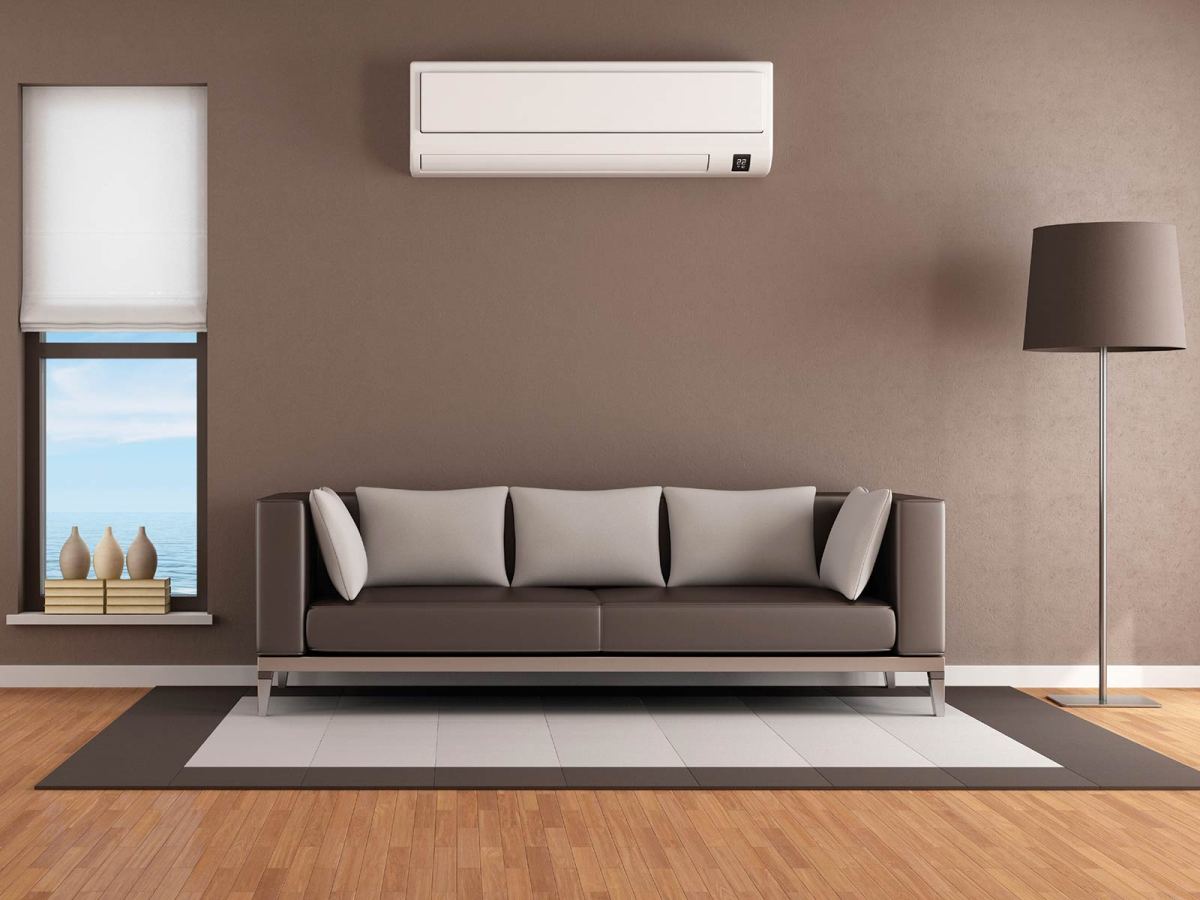Energy efficiency, correct sizing and knowledgeable sales staff are front of mind as Australia braces for another record-breaking summer.
- Retailers that communicated prices rises due to the Carbon Tax must now lower prices or risk the wrath of the ACCC.
- Sizing is a big issue: retailers are encouraged to use the tools provided by suppliers to make sure their customers are choosing the right product.
- Smart controls have been identified as an emerging trend but the biggest trend of all concerns energy efficiency.
The Ultimate Guide to Fans, Air Multipliers and Portable Cooling for Summer 2015
It’s been an exciting 12 months for market leading air conditioning brand Fujitsu General. After a long innings sponsoring a V8 Supercars team, the Japanese brand switched focus, singing on with Essendon Football Club in the AFL and the South Sydney Rabbitohs in the NRL, and revealing an ambition to, in essence, totally dominate the Australian market — both residential and commercial — with Mark Taylor plucking his mandolin all the while.
A spokesperson said the success of the brand through 2014 so far has not been without challenges but it has been gratifying, and he thanked Fujitsu General’s dealership network for their support.
“Despite challenging retail conditions, Fujitsu General has retained its number one market share position in the retail sector, in both units and value,” he said. “This positive growth can be attributed to the ongoing support Fujitsu receives from key retail partners paired with strong marketing initiatives.”
The spokesperson said consumers were very mindful of how much they were paying for electricity and, as such, efficiency is a major concern. In addition to wanting to reduce their power bills through better technology, consumers also want to know that their actions will not be adversely affecting the environment. Features likes Human Sensor Control, which minimises output when no activity is detected in a room; built-in Smart Demand control and Inverter technology has helped give Fujitsu General’s flagship Designer air conditioner (ASTG09KUCA, RRP $1,529) a 5-star Energy Rating for both cooling and heating.
Despite Fujitsu General acknowledging the impact technology can have on the environment and its own focus on reducing its air conditioner’s energy consumption, the spokesperson was very happy and the repeal of the so-called Carbon Tax and said the benefits of this rollback will be numerous.
“The recent Carbon Tax repeal has also brought immediate relief among businesses of all shapes and sizes, as well as consumers,” he said. “The Carbon Tax was said to be one of the highest taxes in the world, making it even more difficult for Australian businesses to remain competitive in what was already a challenging environment.
“The repeal will inherently help lift consumer confidence, bringing significant benefits to the wider Australian economy.”
The spokesperson even suggested that retailers saving money from the repeal of the Carbon Tax could invest these savings in improving customer service. “Hopefully, the repeal will mean business owners can reallocate funding to areas that need it most, such as training and customer service.
“In addition, consumers can expect to shave off 20 to 50 cents each day from their electricity bills from 1 July 2014.”
Retailers should note that if they increased prices and subsequently attributed these price rises to the Carbon Tax, they must now pass on any savings to the consumer, or risk the wrath of the ACCC.
“The ACCC expects that cost savings arising from the carbon tax repeal will be passed through to consumers,” said Rod Sims, chairman of the consumer watchdog. “We will be keeping a close eye on prices and where all cost savings are not passed through, or entities make false or misleading representations, the ACCC will use its enforcement powers.”
As of mid-August 2014, the ACCC was issuing over 250 notices per week to businesses, asking them to explain how the repeal was affecting their prices. Penalties for failing to pass through cost savings include fines, per contravention, of up to $1.1 million for businesses and $220,000 for individuals.
In essence, if you raised prices because of the Carbon Tax, you must now decrease them. If not, the ACCC will be coming after you.

Fujitsu General Designer Range Reverse Cycle Air Conditioner (ASTG09KUCA, RRP $1,529) has a 5-star energy rating for cooling and heating, Human Sensor Control and built-in Smart Demand.
The spokesperson said retailers can expect to see and hear a lot from Fujitsu General over the coming months as it continues to support the trade with above the line promotional activity.
“Fujitsu General will continue to support its retailer partners with a heavyweight summer campaign featuring its brand ambassador, Mark Taylor, as well as a consumer promotion for the new season to help drive customers into stores.
Marketing will run across online, in-store and television and Fujitsu is also reviewing additional activities to help engage and excite retail staff.
The combination of new technology, no Carbon Tax, a long hot summer on the horizon and a substantive marketing campaign in the works all adds up to Fujitsu being refreshingly optimistic about sales this season.
“We’re pleased with our current position in the air conditioning market and we’re confident this summer will be another successful season,” he said. “We encourage retailers to ensure staff members remain up to date with training, the latest features and benefits and a strong understanding of the importance of selecting the right model, as these are sure to garner questions from customers.”
To that end, the spokesperson recommends Fujitsu General’s newly redesigned website as a major selling tool for retailers to close customers and as an educational source for consumers looking to be matched to the right air conditioner. “Simply enter basic details, such as room measurements, insulation and the direction windows face, to find the most suitable product.”
Due to the record breaking heat of the summer of 2014, which seemed to continue unabated through until winter, at least in the heavily populated eastern states, there were good returns the portable air conditioner market, according to Helen Finlayson, category marketing manager at De’Longhi.
“The extreme weather was definitely a major contributor in the growth of the portable cooling industry, with a boost of 8 per cent for the 12 months to February 2014 from the previous season,” Finlayson said. “The Climate Council predicts an even hotter 2014/2015 summer, which for the portable cooling market, sounds very promising.”
According to a report prepared by the Climate Council, titled Angry Summer, Australia has always been and will continue to be “a land of extremes”. The authors of this report concluded that Australia will experience more heatwaves, hot days, droughts and both record high and low rainfalls over the coming seasons, due in part to climate change.
“Many of our largest population centres stand out as being at increased risk from extreme weather events, including heatwaves, drought and bushfires,” says the report.
To keep Australians cool during these hot summers, Finlayson said De’Longhi has consolidated its portable air conditioning range down to five key models, including three featuring the Italian brand’s exclusive Water-to-Air technology.
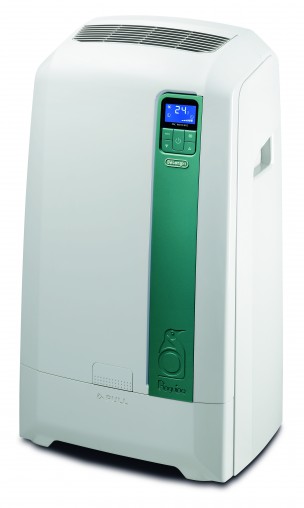
De’Longhi Inverter Water To Air Portable Air Conditioner (PACWE18INV RRP $1,299) reaches the ideal temperature and maintains it without fluctuations. It uses exclusive technology to remove heat from the room through the cooling effects of water and, with a 10-litre tank capacity, the unit operates on water for up to 6 hours.
“Simply put, this technology refers to the unit’s splash motor spraying water over the condenser, effectively cooling it down, creating 9 per cent cooler air than traditional the Air-to-Air mode,” she explained.
Finlayson agrees with the Fujitsu view that increasing power costs and ambiguity over the Carbon Tax means that energy efficiency is a key consideration for consumers when purchasing portable cooling products.
“Our Water-to-Air models cool the room faster, which results in lower energy consumption, among other benefits, such as greater cooling capacity and quieter operation.”
De’Longhi’s flagship portable air conditioner is the PACWE18INV (RRP $1,299), which is the only model on the Australian market supporting both Water-to-Air and Inverter technologies, according to Finlayson, who explained the benefits this brings to consumers.
“Inverter technology not only eliminates the sequence of on/offs required by conventional air conditioners and is cheaper to run, but when the set temperature is reached, it remains constant, with swings as low as +/- 0.05° Celsius.”
Other models in De’Longhi’s range include the new 3.1-kilowatt Water- To-Air Portable Air Conditioner PACWE112ECO (RRP $799), which combines Water-to-Air with R290 Eco Gas and the 2.85-kilowatt Air-To-Air Portable Air Conditioner (PACA100ECO, RRP $599), which offers consumers high operational efficiency, low running costs, and reduced energy consumption.
De’Longhi has been using infographic videos to communicate the benefits of its portable air conditioner range and Finlayson says these have been a big hit with retailers and customers.
“The infographic video will again form part of our online banner campaign, one we have been running for the past three years with great success,” she said. “The campaign is far-reaching and targeted towards the end user; including a consumer promotion and a store locator to complete the path to purchase.”
There are two companies carrying the Mitsubishi brand selling air conditioners in the Australian market: Mitsubishi Heavy Industries and Mitsubishi Electric. Both companies grew out of the same multi-industry Japanese conglomerate, known in Japan as a ‘zaibatsu’, which splintered into over 20 autonomous companies after World War II, each with permission to us the red logo comprising three diamonds and the name Mitsubishi, which loosely translates into English as ‘Three Diamonds’.
While the myriad Mitsubishi companies, and this includes the famous car company, a bank and a chemical company among many others, own shares in each other and have an oversight committee similar to a board, the companies are essentially separate.
Graham Hamilton is the senior sales advisor at Mitsubishi Heavy Industries. He said that three key trends have emerged to dictate what models consumers are drawn to consider purchasing.
The first is Wi-Fi connectivity, which is attracting consumers due to the convenience of being able to control the air conditioner from outside the home.
The second is DRED compatibility. DRED stands for Demand Response Enabling Device and it means energy companies are able to lower the power consumption of an air conditioner, usually during peak operation times, to decrease the strain on the overall grid. One of the reasons this is becoming popular is because state governments are offering rebates to customers who choose to purchase DRED-enabled air conditioners and then connecting to a relevant energy-saving program. For example, Energex electricity customers in Queensland can receive up to $500 each for up to five compatible air conditioners purchased.
Hamilton’s third trend is efficiency. He said, “Customers are concerned about the cost of running an air-conditioner. It’s important that we keep developing more efficient units to keep up with the demands for lower running costs and a more environmentally friendly product.”
To raise the profile of its range of DRED-enabled Inverter wall split air conditioners, Mitsubishi Heavy Industries has been embarking on a digital brand campaign. This program started in May 2014 and will continue throughout the year. “It brings greater brand awareness to the market and also directly puts potential customers in contact with our dealers,” Hamilton said.
When faced with these customers, Hamilton encourages dealers to take a slow-and-steady approach to the sale, heeding the immortal words of Alexander Pope, that “fools rush in where angels fear to tread”:
“The sales cycle for air conditioners is slower than for other appliances. To improve the chances of closing the sale, it’s important that sales staff are able to be confident when talking about features, reliability and efficiency, so customers can feel confident to take this information away with them while they discuss their options.”
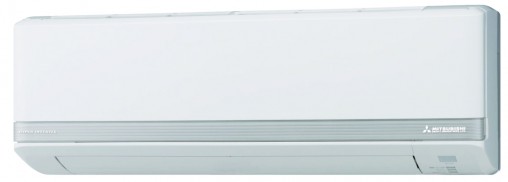
Mitsubishi Heavy Industries Inverter Air Conditioner (SRK20ZXMA-S) is DRED-enabled and 6-star Energy Rated, up to 28 programs can be made for a weekly cycle and Allergen Clear System catches allergens including pollen, lice and dust mites.
Zane Barron is the deputy general manager at the other Mitsubishi: Mitsubishi Electric. He said that consumer awareness of the cost of energy has risen exponentially in recent years and this has led to manufacturers reaching new highs in energy efficiency. At the moment, customers are mostly returning to the market when their current model becomes too old and broken for repair; Barron said the industry needs to encourage existing users to re-enter the market earlier.
“If we can raise the awareness of replacing still operating older systems for more efficient modern systems, the energy saving for the consumer could be substantial,” he said, noting that Smart controls and intuitive interfaces are emerging trends.
“Retailers who focus their promotion on the consumer who is making a considered purchase will benefit as the market matures and looks for brands that add style and convenience to features that offer the benefits of quality and reliability.”
Mitsubishi Electric is promoted in media by TV personality Fast Ed, who regularly appears on Channel Seven’s Better Homes and Gardens program. Barron said this campaign, which also includes Mitsubishi Electric’s refrigerator range, is proceeding well.
“We are ecstatic with the cut-through he achieves with decision makers. He is the face of our promotional activity across our range of air conditioning and refrigerator products, which has been ongoing since last summer and will continue as the season opens this year.
“We are also working closely with our retail partners to develop joint campaigns that target the consumer who is ready to buy.”
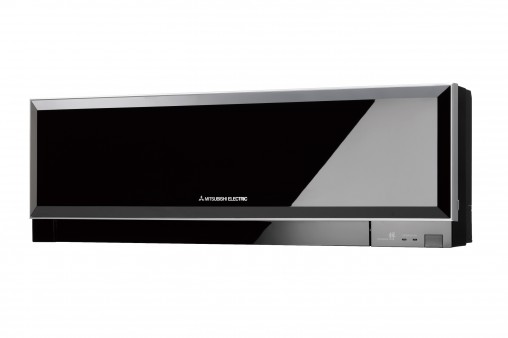
Mitsubishi Electric Signature Series (MSZ-EF RRP from $1,490) operates quietly thanks to a Silent Mode fan speed setting, it is available in white, black and silver facades and from 2.2-to-5.0-kilowatts and has a Nano Platinum Filter for eliminating bacteria and for deodorising.
In a retail economy characterised by highly informed consumers that are wary of retailers pushing them towards products for nefarious reasons, Barron said air conditioning stands apart, as consumers really don’t know what type, size and functionality is best for them. That’s why a smart and savvy sales team is essential.
“Air conditioning remains a category where most consumers are not sure of the right product for their requirements,” Barron said. “Retailers who have well-trained and knowledgeable staff that can direct their customers to the size and brand for their application will be successful.
“A happy air conditioner customer is only realised once the product sold is installed and tested under harsh weather conditions.”
Correct sizing has always been a key component of Panasonic’s air conditioner messaging, which is unsurprising considering the brand has been at the forefront of this issue with its iPhone, Android and web app to help customers choose the right model.
“This application is very easy to use: simply enter some basic details about your room size and environment and the Sizing Wizard will return the air conditioner best suited to your needs,” explained Shane Quinn, Panasonic’s national business manager for Air Conditioning.
Panasonic has always marketed itself as the greenest of the major appliance brands — it uses the tagline ‘Eco Ideas’ — so it follows that energy efficiency is a major platform of their air conditioning offering.
“The latest Econavi technology from Panasonic uses human activity, sunlight and temperature sensors to intelligently adapt the cooling power according to the room conditions,” Quinn said. “With just one touch of a button, customers can enjoy energy savings of up to 38 per cent on cooling mode and up to 45 percent on heating mode.”
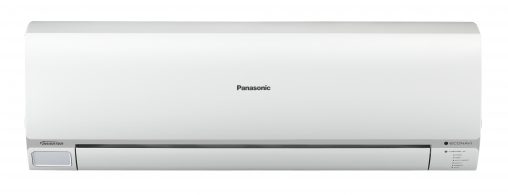
Panasonic Econavi Reverse Cycle Inverter Air Conditioner (CS-E9PKR RRP $1,386) has advanced energy-efficiency with Econavi features and Inverter, Nanoe-G air purifier and Mild Dry Cooling function. It is designed to withstand the harsh Australian climate and is easy to use and very quiet operation.
In something of a departure from the other suppliers visited in this feature, LG Electronics’ focus is not squarely on energy efficiency. While the Korean company does list efficiency as one of the major trends, the company is instead focusing on its credentials in the category and communicating the benefits to dealers of partnering with a strong brand.
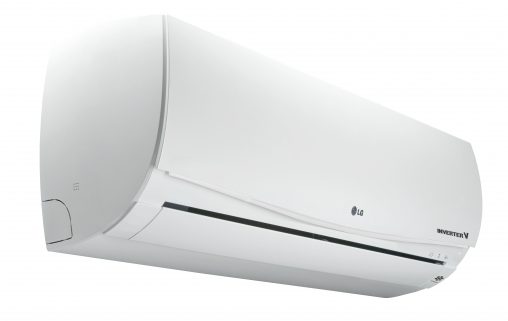
LG has a wide range of air conditioners in its W and P series, from RRP $1,989 to RRP $2,899.
“Retailers need to look beyond price when choosing an air conditioning partner,” said Milton Kaloudis, general manager of air conditioning and energy solution at LG. “Whilst price may be a consideration in some cases, consumers need to feel comfortable in the investment that they are making, so selection should be based on the quality, performance, efficiency and features of the range.
“Giving consumers control of their environment will give them this comfort, as will choosing a brand that is well established in the Australian market.”
LG has a very wide range of residential air conditioners (in addition to its similarly broad commercial range), including High Wall Splits, Ducted Splits, Cassette Slips and Multi Systems. There is also the choice of Classic or Premium, which the latter offering advanced air filtration, low noise operation and Wi-Fi Smart Control on selected models.
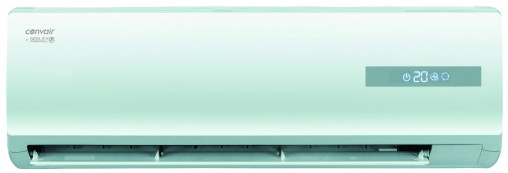
Convair Inverter Split System Air Conditioner (CV70/ODU70 RRP$1,499) from Seeley International has 7-kilowatt cooling and 7.5-kilowatt heating capacities, four fan settings, and sleep mode, auto restart function and child lock plus 24-hour timer.

